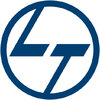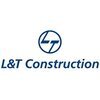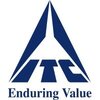Filter interviews by
MGCPL Structure Site Engineer Interview Questions and Answers
MGCPL Structure Site Engineer Interview Experiences
1 interview found
Bridge construction
Bridge construction
Interview Preparation Tips
Road works.
Missilinous work in railway.
Interview questions from similar companies

Interview Questionnaire
1 Question
- Q1. What is name mangling?
- Ans.
Name mangling is a technique used by compilers to give unique names to functions and variables to avoid naming conflicts.
Name mangling is used in C++ to support function overloading.
It is also used in Python to avoid naming conflicts in modules.
Name mangling can make it difficult to access variables and functions from outside the class in which they are defined.
In C++, name mangling can be seen by using the 'nm' comman
Skills evaluated in this interview

Interview Questionnaire
2 Questions
- Q1. CAE Basics related question
- Q2. Occupant related questions

Interview Questionnaire
1 Question
- Q1. What are your career aspirations?

Interview Questionnaire
1 Question
- Q1. Tell me about yourself

Interview Questionnaire
1 Question
- Q1. What do u know about c..?
- Ans.
C is a general-purpose programming language known for its efficiency and low-level memory manipulation capabilities.
C was developed by Dennis Ritchie at Bell Labs in 1972.
It is widely used for system programming, embedded systems, and developing operating systems.
C is a compiled language and is known for its speed and efficiency.
It has influenced many other programming languages, including C++, Java, and Python.
Some po...

I applied via Walk-in and was interviewed before Jun 2022. There were 5 interview rounds.

Generic engineering questions
(1 Question)
- Q1. Current role overview and CAD test
(1 Question)
- Q1. Body engineering and performance related questions
(1 Question)
- Q1. Package discussion and job location discussion

I applied via Recruitment Consulltant and was interviewed before Aug 2022. There were 4 interview rounds.

(2 Questions)
- Q1. Purely automotive basics
- Q2. Sheet metal basic
(1 Question)
- Q1. BIW basics sheets metals
(1 Question)
- Q1. Personal background
Interview Preparation Tips

I applied via Recruitment Consulltant and was interviewed in Dec 2024. There was 1 interview round.
(2 Questions)
- Q1. About project in depth
- Q2. What are some technical questions related to your job description?

I applied via Referral and was interviewed in Mar 2023. There were 2 interview rounds.
(3 Questions)
- Q1. Technicals about powertrain design
- Q2. Basic questions about function of parts
- Q3. Basic questions about how to address field concerns
(1 Question)
- Q1. Why do you want to join
MGCPL Interview FAQs
Tell us how to improve this page.
Interview Questions for Popular Designations
- Structural Engineer Interview Questions
- Structural Design Engineer Interview Questions
- Civil Structural Engineer Interview Questions
- Senior Structural Engineer Interview Questions
- Senior Engineer Structure Interview Questions
- Junior Structural Engineer Interview Questions
- Senior Structural Design Engineer Interview Questions
- Civil Structural Designer Interview Questions
- Show more
Interview Questions from Similar Companies
MGCPL Structure Site Engineer Reviews and Ratings
based on 1 review
Rating in categories
|
Civil Site Engineer
14
salaries
| ₹1.4 L/yr - ₹4.2 L/yr |
|
Site Engineer
7
salaries
| ₹1.8 L/yr - ₹4.2 L/yr |
|
Structure Site Engineer
5
salaries
| ₹4.5 L/yr - ₹5.4 L/yr |
|
Junior Engineer Civil
5
salaries
| ₹1.9 L/yr - ₹2.5 L/yr |
|
Junior Engineer
5
salaries
| ₹1.8 L/yr - ₹2.5 L/yr |

Adani Enterprises

Tata Group

Reliance Industries

Aditya Birla Group
- Home >
- Interviews >
- MGCPL Interview Questions >
- MGCPL Structure Site Engineer Interview Questions


















